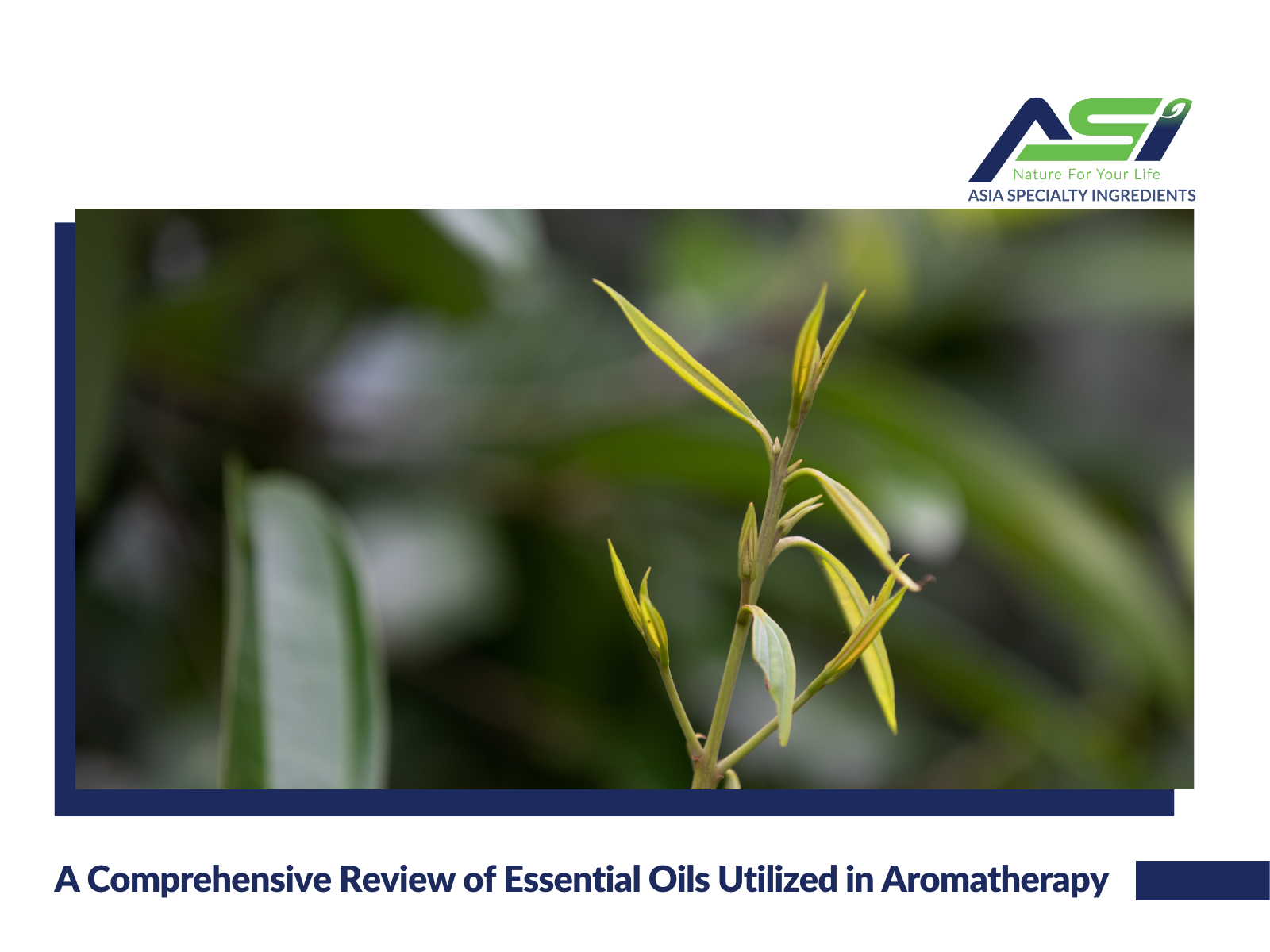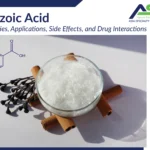Aromatherapy, the practice of using essential oils for therapeutic purposes, has garnered significant attention for its potential to enhance physical, emotional, and psychological well-being. This comprehensive review delves into the diverse range of essential oils utilized in aromatherapy, exploring their origins, properties, and applications. By examining the scientific evidence and traditional uses, this review aims to provide a thorough understanding of how essential oils contribute to holistic health and wellness.
Table of Content
ToggleA brief introduction of essential oil
Essential oils are aromatic and volatile liquids obtained from plant materials, including flowers, roots, bark, leaves, seeds, peel, fruits, wood, and whole plants. It can be obtained through steam distillation or water distillation. Throughout history, these oils have been regarded with great interest, although many of their uses have been lost with time, it is generally accepted that human beings have been extracting them from aromatic plants since the dawn of humanity.
The applications of essential oils for different purposes are varied and include not only their use in cooking to enhance the taste and health benefits of food but also their application in the manufacture of perfumes and cosmetics. Another interesting aspect of these oils is their potential as therapeutic agents in aromatherapy or as active principles or excipients of medicines.
What is aromatherapy and how it works?
Aromatherapy is the art and science of using botanical essential oils to create and maintain physical, mental, emotional, spiritual, and well-being. It is also the use of pure, natural essential oils (all of which have scents) in health and beauty treatments. Aromatherapy is holistic and enjoyable. Real aromatherapy uses only the highest quality essential oils, and it works not only from the scent but also from applying the oils through massage, bathing, and skin care products.
When inhaled, the scent molecules in essential oils travel from the olfactory nerves directly to the brain and especially impact the amygdala, the emotional center of the brain. Essential oils can also be absorbed by the skin. For example, a massage therapist might add a drop or two of Wintergreen oil to help relax tight muscles during a rubdown.
Types of aromatherapies
The basic classification of aromatherapy is via the route of administration; oral or topical. It includes various techniques such as massage, psych-aromatherapy, cosmetic, medical, and olfactory stimulation.

The most commonly used essential oils in aromatherapy
There are dozens of essential oils, all with different fragrances and chemical makeups. Which essential oils are best depends on what symptoms you’re looking to ease or what fragrances you prefer. Some of the most popular essential oils include:
Lemon oil
Its oil constituents are abundant in the terpenes, D-limonene, and Limonene, together forming about 90 percent of the bulk of the oil. Lemon essential oil is mainly used to boost the immune system and to accelerate the white corpuscles production along with counteracting acidity and ulcers through citric acid, which helps digestion, by forming carbonates and bicarbonates of potassium and calcium.
A recently conducted double-blinded, randomized, controlled clinical trial study on aromatherapy has suggested that citrus oil is good in relieving first-stage labor pain. It is effective in controlling nausea and vomiting along with its mood-elevating properties.
Lavender oil
Lavender contains camphor, terpinen-4-ol, linalool, linalyl acetate, betaocimene, and 1,8-cineole. Its constituent varies in concentration and therapeutic effects with the different species. Linalool and linalyl acetate have maximum and great absorbing properties from the skin during massage with a depression of the central nervous system. Linalool shows sedative effects and linalyl acetate shows marked narcotic actions.
These two actions may be responsible for its use in lavender pillow anxiety patients with sleep disturbance patterns, improving the feeling of well-being, supporting mental alertness, and suppressing aggression and anxiety. Lavender oil shows its antibacterial and antifungal properties against many species of bacteria, especially when antibiotics fail to work, but the exact mechanisms are yet to be established.
Eucalyptus
Eucalyptus contains Cineole (70%–85%), Aromadendrene Limonene Terpinene, Cymene, Phellandrene, and Pinene. Its oils have been used to regulate and activate the various systems like the nervous system for neuralgia, headache, and debility. The immune system boosts immunity against measles, flu, cold, and chickenpox. Throat infections, catarrh, coughs, bronchitis, asthma, and sinusitis associated with the respiratory system have been taken care of by oils of this plant. Moreover, skin problems like wounds, cuts, burns, herpes, lice, insect repellent, and insect bites can be treated with it.
Geranium
Eugenol, Geranic, Citronellol, Geraniol, Linalol (Linalool), Citronellyl Formate, Citral, Myrtenol, Terpineol, Methone, and Sabinene are the chemical constituents of its essential oil. One of the best natural perfumes, complete in itself is geranium oil, generally used in soaps and detergents because its unique nature is never challenged by the alkalinity of soaps.
Hence, this oil is generally used to control emotions in aroma therapy. It is used in dermatitis, eczema, aging skin, and some fungal infections, along with anxiety and stress-related problems. The oil has some anti-bacterial action and is an important ingredient for endometriosis treatment. This oil is further used for its sedative properties, nerve tonic, in throat infection, to rectify the blood disorder diabetes, and for menopausal-associated problems.
Tea tree
The main constituent of its oil is Terpinen-4-ol, an alcoholic terpene with a clean musty aroma. The antiviral activity is due to alpha-sabine with antibacterial and antifungal effects. The tea tree itself possesses antibacterial, anti-inflammatory, antiviral, insecticidal, and immune stimulant properties. The aromatherapy utilizes a mixture of lemon, blue gum, clary sage, eucalyptus, lavender, rosemary, ginger, and Scotch pine for the treatment of different ailments.
The oil is used in herpes, abscess, blisters acne, cold sores, burns, insect bites, dandruff, and oily skin. Further, in the treatment of respiratory-associated problems, it has been used for tuberculosis, cough, bronchitis, asthma, catarrh, and whooping cough; also it is used in females for vaginitis, cystitis, and pruritus treatment. Cold, fever, flu, and chickenpox have called for its use.
The medicinal effects of essential oils
Since ancient times, essential oils have been recognized for their medicinal value and they are very interesting and powerful natural plant products. They continue to be of paramount importance until the present day. Essential oils have been used as perfumes, flavors for foods and beverages, or to heal both body and mind for thousands of years.
Essential oils as antioxidants
The cellular balance of free radicals is maintained by different antioxidants. Flavonoids, terpenoids, and phenolic constituents of essential oils exhibit significant antioxidant effects.
Anti-inflammatory activities
Eucalyptus, rosemary, lavender, pine, clove, and myrrh oils exert potential inflammation-preventive abilities. Their activities are mediated through mechanisms such as inhibition of lipoxygenase, prevention of leukotriene synthesis, inhibition of enzymes, inhibition of pro-inflammatory cytokines, as well as repression of pro-inflammatory genes.
Clinical trials have looked at whether essential oils can alleviate conditions such as anxiety, depression, nausea, insomnia, low appetite, and dry mouth.
Essential oil safety guide
It is generally considered that essential oils are safe to consume, however, they may have some side effects and these should be taken into account. The common side effects include eye and skin irritation problems, especially those essential oils which are rich sources of polyphenols and aldehydes. If you drink some essential oils they can hurt your kidneys or liver.
The other phytotoxic effect is contact sensitization due to oxidation of monoterpenes. Cross-sensitization in food material is also reported in some cases. Allergic reactions of essential oils have been reported in some studies when applied to skin and mucous membranes for aromatherapy.
When stored for a long duration, oils undergo biochemical composition changes which have been reported to affect badly e.g. repeated use of Lavandula sp. essential oils enlargement of the breast before the onset of puberty. So there is a need to ensure the safety claims of essential oils.
Conclusion
In conclusion, essential oils have demonstrated remarkable potential in the field of aromatherapy, offering a wide array of therapeutic benefits. From alleviating stress and anxiety to improving sleep and enhancing mood, these natural extracts have been embraced for their holistic healing properties. Scientific research, coupled with traditional knowledge, underscores the efficacy and versatility of essential oils in promoting overall well-being. As interest in natural and complementary therapies continues to grow, the role of essential oils in aromatherapy is likely to expand, providing valuable insights and solutions for enhancing quality of life.
Read more: https://asi-vn.com/vietnam-cinnamon-cassia-in-north-america-europe/
Asia Specialty Ingredients (ASI), part of Asia Ingredients Group (AIG), specializes in the production and global export of essential oils and natural aromatics. Our range of products is meticulously processed using only the finest natural ingredients sourced from the typical lands of Vietnam, including Cassia, Basil, Star Anise, and more, ensuring good product quality. Contact us for more collaboration opportunity!








